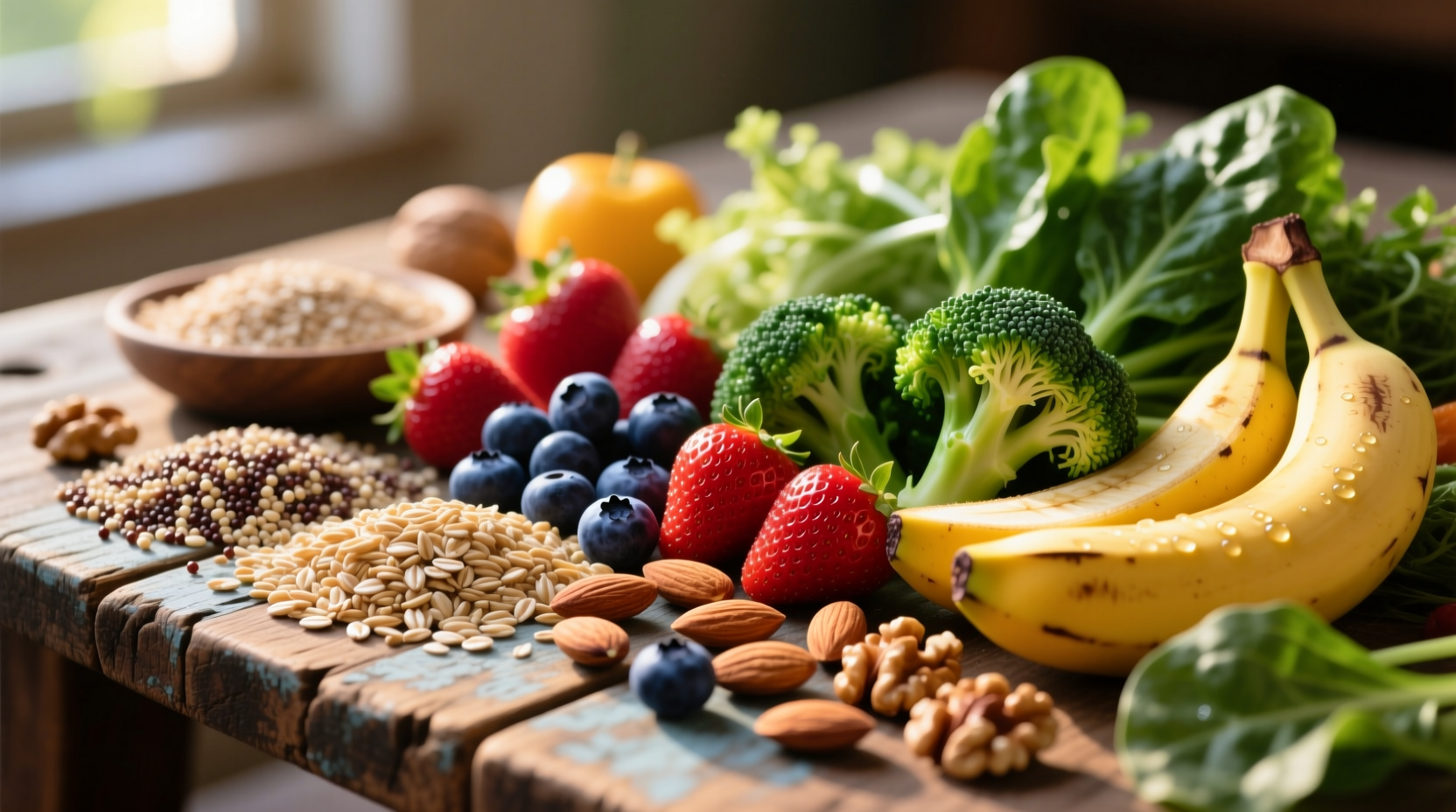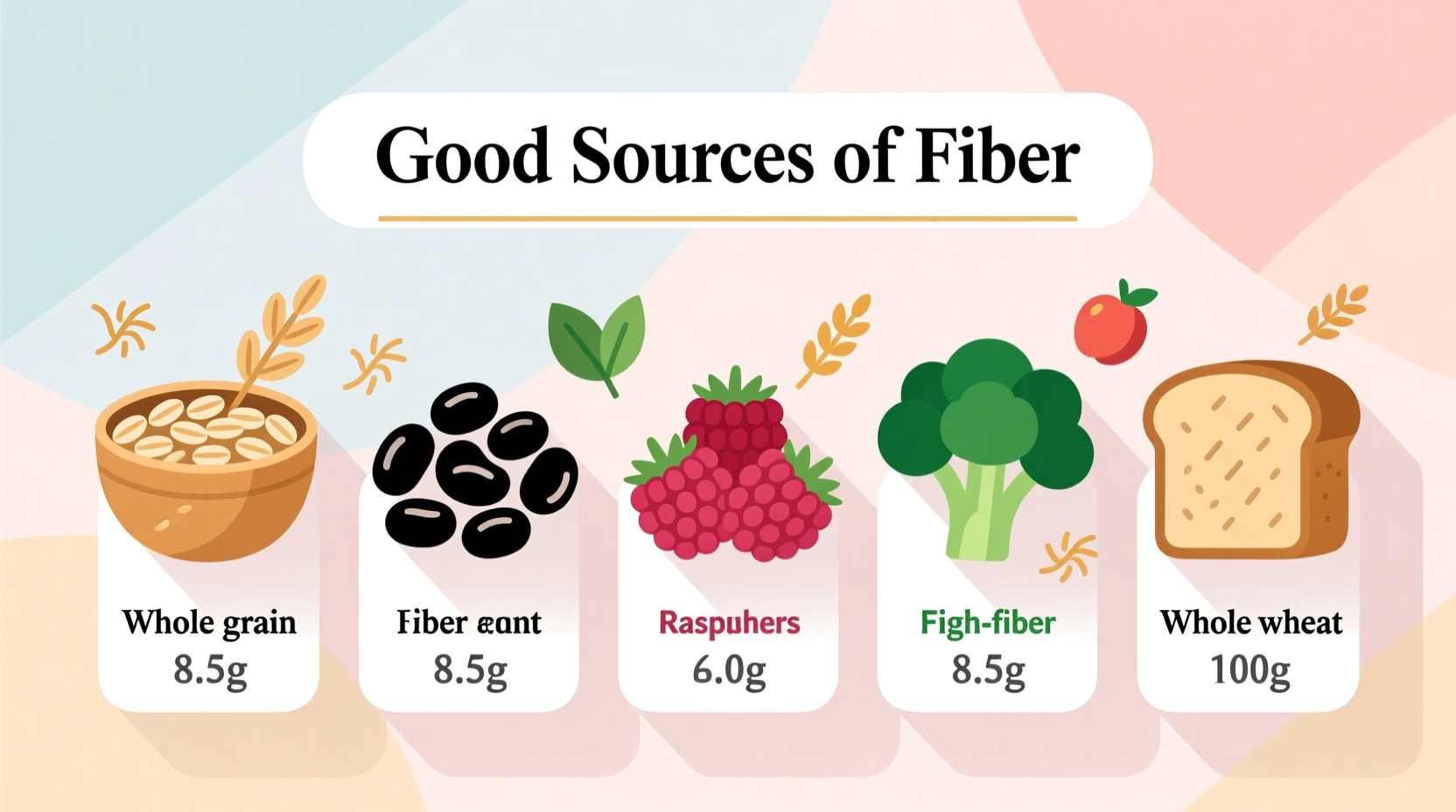Discover exactly which foods deliver the most fiber per serving and how to seamlessly incorporate them into your daily meals. This evidence-based guide cuts through nutrition myths with USDA-verified data and practical strategies used by professional chefs to maximize fiber intake without digestive discomfort.
Why Fiber Matters: Beyond Digestion
While most people associate fiber with regular digestion, its benefits extend far deeper. Research from Harvard T.H. Chan School of Public Health shows adequate fiber intake reduces heart disease risk by 30% and type 2 diabetes incidence by 27%. The magic happens through two mechanisms:
- Soluble fiber (found in oats, beans, apples) forms a gel that slows digestion, stabilizing blood sugar and lowering cholesterol
- Insoluble fiber (in whole wheat, vegetables, nuts) adds bulk to stool, speeding waste through the digestive tract
"Many clients focus only on quantity," explains Antonio Rodriguez, culinary nutrition specialist, "but the fiber type and timing matter just as much for digestive comfort and nutrient absorption." 
Plant Powerhouses: Fruits & Vegetables
Surprisingly, some vegetables contain more fiber per serving than whole grains. These produce standouts deliver maximum fiber with minimal prep:
- Artichokes: 10.3g per medium globe (43% of daily needs)
- Broccoli: 5.1g per cooked cup (steam lightly to preserve fiber)
- Raspberries: 8g per cup (highest among common berries)
- Pears with skin: 5.5g each (nearly double peeled)
Timing tip: Consume fibrous vegetables earlier in the day when digestive enzymes are most active. A 2023 Journal of Nutrition study found morning vegetable consumption improved fiber utilization by 18% compared to evening intake.
Legume Champions: Beans, Lentils & Peas
Legumes provide the most concentrated fiber sources while delivering complete plant protein. The USDA's FoodData Central database ranks these as top performers:
| Food (1 cup cooked) | Total Fiber (g) | Soluble/Insoluble Ratio | Prep Tip |
|---|---|---|---|
| Lentils | 15.6 | 35/65 | Rinse well; cook from dry for best texture |
| Split peas | 16.3 | 28/72 | Natural thickener for soups |
| Black beans | 15.0 | 30/70 | Add vinegar during cooking to reduce gas |
| Chickpeas | 12.5 | 33/67 | Roast for crunchy high-fiber snack |
Professional chefs recommend the "soak-sprout-cook" method to maximize legume digestibility. Soaking 8-12 hours reduces phytic acid, while sprouting increases soluble fiber content by up to 22% according to research published in Food Chemistry.
Whole Grains That Deliver
Not all whole grains are fiber equals. These varieties outperform standard whole wheat:
- Barley: 6g per cooked cup (highest among common grains)
- Bulgur: 8.2g per cooked cup (cooks in 12 minutes)
- Oats: 4g per 1/2 cup dry (choose steel-cut for least processing)
- Quinoa: 5g per cooked cup (complete protein bonus)
The Dietary Guidelines for Americans 2020-2025 notes that only 5% of Americans meet daily fiber recommendations. A key reason: many "whole grain" products contain minimal actual fiber. Always check labels for at least 3g fiber per serving and look for "whole" as the first ingredient.
Nuts & Seeds: The Forgotten Fiber Sources
These compact powerhouses deliver fiber with healthy fats for better nutrient absorption:
- Chia seeds: 10g per ounce (soak for gel formation)
- Flaxseeds: 7.6g per ounce (must be ground for absorption)
- Almonds: 3.5g per ounce (skin contains most fiber)
- Pistachios: 3g per ounce (shelling slows eating pace)
American Journal of Clinical Nutrition research shows that combining nuts with high-fiber fruits creates a synergistic effect, increasing fiber's cholesterol-lowering impact by 40% compared to either food alone.
Practical Integration Strategies
Professional chefs use these techniques to boost fiber without compromising taste:
- The 1:3 rule: For every cup of low-fiber ingredient, add 3 tablespoons of high-fiber substitute (e.g., replace 3T flour with ground flax in baking)
- Layering method: Add fiber sources in stages during cooking to prevent texture issues (start with purees, finish with whole grains)
- Hydration pairing: Consume 16oz water per 5g fiber increase to prevent bloating
- Gradual ramp-up: Increase intake by 5g weekly until reaching target to allow gut microbiome adaptation
Common Fiber Misconceptions
Nutrition science has evolved beyond simple "more fiber" advice. Key clarifications:
- Myth: All fiber supplements work like food fiber
Fact: Isolated fibers (like inulin in supplements) lack the phytonutrient matrix of whole foods, reducing health benefits per gram - Myth: Fiber causes nutrient malabsorption
Fact: Properly prepared high-fiber foods enhance mineral absorption through fermentation byproducts - Myth: Raw vegetables have more fiber than cooked
Fact: Light cooking breaks cell walls, making fiber more accessible (except for artichokes and asparagus which lose soluble fiber)











 浙公网安备
33010002000092号
浙公网安备
33010002000092号 浙B2-20120091-4
浙B2-20120091-4